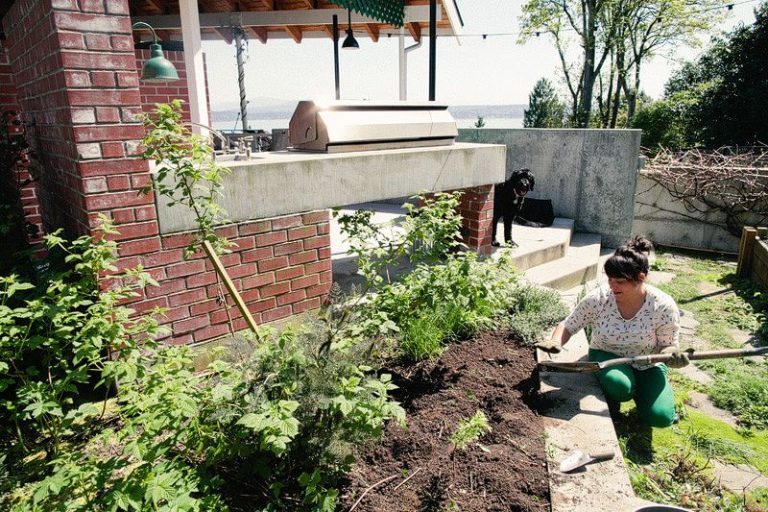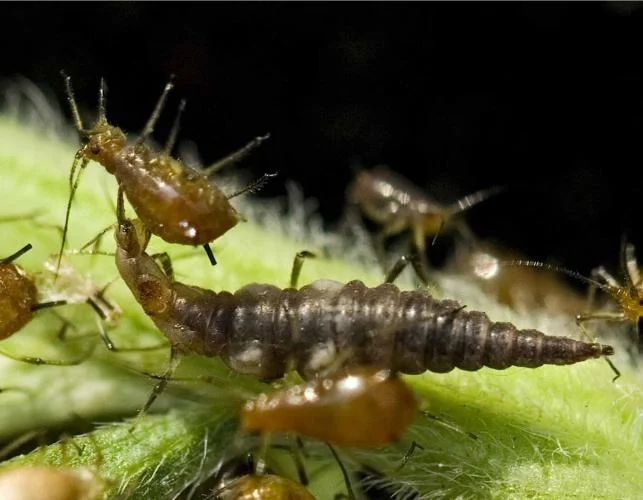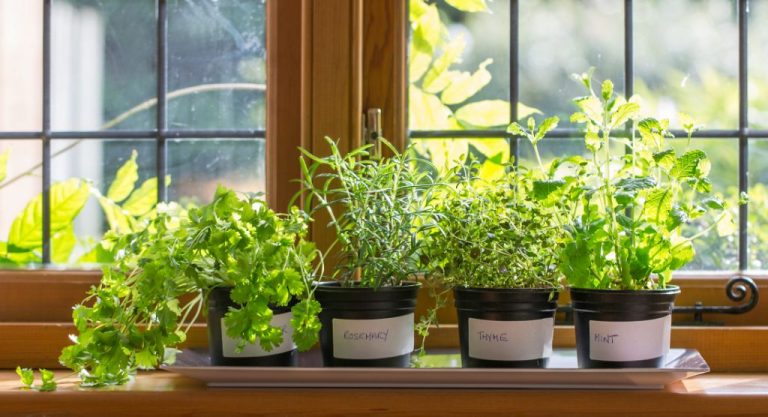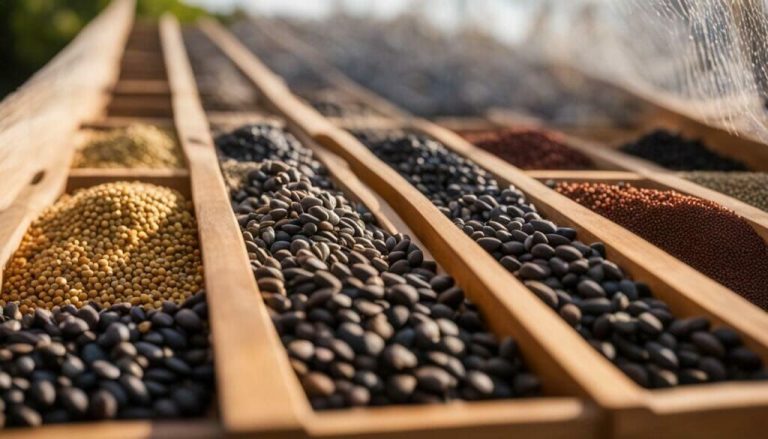Organic Vegetable Gardening In Raised Beds: Maximizing Space And Yield
Raised bed gardening has become increasingly popular over the past few decades, and for good reason. Raised beds offer gardeners several advantages over traditional in-ground gardening methods. The primary benefits of raised bed gardening include:
- Better drainage and aeration of soil
- Easier access without compacting soil
- Higher yields in a small space
- Fewer weeds and pests
- Customized soil content and depth
- Easier to tend for those with mobility issues
By constructing a framed planting bed and filling it with a mix of compost, organic matter and soil, gardeners create the ideal environment for growing vegetables, herbs and flowers. The soil warms up faster in the spring, which allows for an earlier start to the gardening season. The loose, fertile soil in a raised bed allows plant roots to grow unimpeded, leading to healthier plants. And the beds’ elevation means no stooping or kneeling required!
In this comprehensive guide, we’ll cover how to plan, build and plant raised bed gardens to maximize your available space and yield. Raising your garden has many advantages, and will lead to bountiful harvests even in a small backyard. Let’s explore how to make the most of raised bed gardening![1]
Planning Your Raised Beds
When planning your raised beds, the ideal size, material, and placement are important considerations.
The most commonly recommended dimensions for raised beds are between 3-4 feet wide and 8-12 feet long. Beds should be no more than 4 feet wide to allow easy access from all sides. For wheelchair access, beds can be as narrow as 2 feet wide. The recommended height for raised beds is between 12-18 inches high for optimal ergonomics.
Raised beds can be constructed from a variety of materials, such as wood, stone, bricks, or metal. Choose rot-resistant wood like cedar or redwood for longevity. Avoid using pressure-treated lumber which may leach chemicals. Recycled plastic boards are another durable option.
When determining placement, make sure your raised beds receive at least 6 hours of direct sunlight daily. Beds should have access to a water source for irrigation. Leave ample space around beds and between rows for maneuvering and maintenance.
For more information, see Raised Garden Bed Dimensions and What Sizes Are Common for Raised Garden Beds?
Building Your Raised Beds
Building a raised bed is a relatively straightforward DIY project that doesn’t require advanced carpentry skills. The basic steps are:
- Choose the material you want to build your raised bed with – wood, stone, galvanized steel etc. Wood is a popular choice as it’s affordable and easy to work with. Cedar and redwood are naturally rot-resistant woods that make good raised bed options. Avoid using treated lumber as the chemicals can leach into your soil and plants. (1)
- Cut your material to the dimensions you want for your raised bed. A common size is 4 feet wide by 8 feet long by 12 inches high. Make sure boards are all the same length. For a wooden framed raised bed, use planks that are about 1 inch thick. (1)
- Assemble the pieces to form your frame. If using wood, screw boards together at the corners. Make sure corners are square. For a freestanding raised bed, you may want to add legs or additional support on the underside. (1)
- Add more stability to the frame if needed. You can use metal brackets, wooden stakes, or angle irons pounded into the ground to reinforce the structure. This prevents bowing or collapsing of the raised bed over time. (1)
- Line your raised bed frame with landscape fabric or weed barrier before adding soil. This will keep weeds from sprouting up through the bottom. Staple the fabric in place along the edges. (2)
- Shovel in good quality garden soil or potting mix. Garden soil alone may compact over time so mixing in compost improves drainage. Fill soil to within a few inches of the top of your raised bed frame. (2)
With these basic construction steps, you’ll have a raised garden bed ready for planting vegetables, herbs, flowers and more. Be creative with materials and dimensions to build customized raised beds for your space.
(1) https://www.homedepot.com/c/ah/how-to-build-raised-garden-beds/9ba683603be9fa5395fab90b41bb0da
(2) https://www.gardenary.com/blog/how-to-build-a-raised-garden-bed-for-just-100
Choosing the Right Soil
Getting the perfect soil mix for your vegetable raised beds is key for the health and productivity of your garden. A good soil mix promotes drainage and water retention, provides nutrients and organic matter, and creates the ideal medium for plant roots to thrive. There are several considerations when putting together a mix:
Soil conditions like pH, nutrient levels, texture, and drainage are important factors. Most vegetables like a slightly acidic pH between 6.0-6.8. The soil should have adequate nitrogen, phosphorus, and potassium for plant growth. A loamy texture with a blend of compost provides nutrients and improves drainage (https://journeywithjill.net/gardening/2020/03/09/3-raised-bed-soil-mixes-compared/).
Organic compost or manure enriches the soil with nutrients and beneficial microorganisms. Compost comprises up to a quarter of a typical mix. Many gardeners also add worm castings or vermicompost for added nutrients (https://joegardener.com/podcast/raised-bed-gardening-pt-2/).
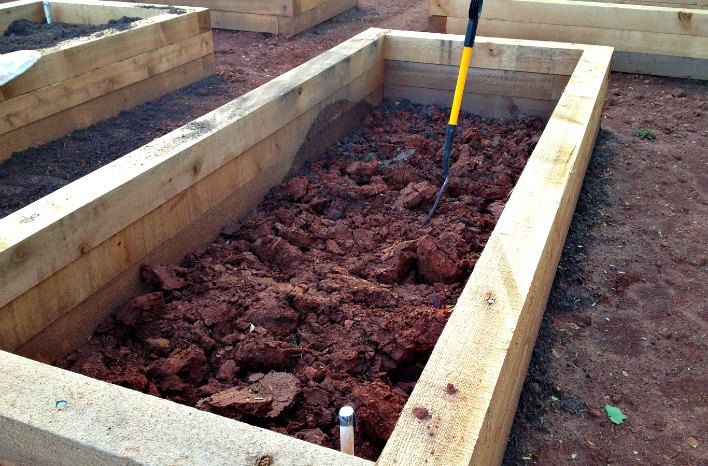
Finally, the soil needs enough bulk and texture. This comes from topsoil, coco coir, perlite or other amendments. These create air pockets for drainage and add body. Getting the proper blend results in an ideal growing medium for your vegetables.
Maximizing Planting Space
One of the main advantages of gardening in raised beds is the ability to maximize planting space and increase yields. There are several techniques gardeners can use to get the most out of every square foot.
Interplanting involves growing quick-maturing crops together with crops that take longer to mature. For example, radishes or lettuce can be planted between tomatoes or broccoli. The fast-growing crops will be harvested before the larger plants need the space (Umbel Organics).
Succession planting means following one crop with another in the same space during the growing season. As soon as a crop is harvested, the space is replanted with another vegetable. This allows multiple yields from the same area (Gardenstead).
Vertical gardening takes advantage of vertical space by training vining crops like pole beans, cucumbers, and tomatoes to grow upwards on trellises instead of spreading horizontally. This opens up ground space for additional plantings.
Crop Selection
When choosing which vegetables to grow in a raised bed, focus on compact, high-yielding crops that make efficient use of limited space. Good options include:
Leafy greens like lettuce, spinach, kale, and swiss chard that can be densely planted and frequently harvested. Radishes and carrots are great small root crops. Bush beans, peas, cucumbers, and summer squash can be trellised vertically along the sides of a raised bed. Tomatoes, peppers, eggplants, and herbs like basil and parsley are also excellent choices for small spaces. Potatoes can be grown in fabric grow bags or even straw bales placed alongside a raised bed.
While large space-hogging vegetables like corn, melons, pumpkins, and winter squash are better suited for traditional in-ground gardens, with careful planning and planting, a raised bed garden can produce abundant yields all season long. Focus on “cut and come again” leafy greens for a continuous harvest along with quick growing crops like radishes.
For more information on the best vegetables for raised beds, check out:https://meadowlarkjournal.com/blog/best-vegetables-to-grow-in-a-raised-bed.
Plant Care
Proper plant care is essential for getting the most out of your raised bed vegetable garden. Here are some tips for watering, fertilizing, and pest management in raised beds:
Watering is crucial, especially in the hot summer months. Make sure to water raised beds more frequently than in-ground gardens, as the soil dries out faster. Aim to water raised beds every 1-2 days if there is no rain. Check soil moisture levels to determine if watering is needed. Consider using drip irrigation or soaker hoses to efficiently deliver water right to plant roots.[1]
Fertilizing will replenish nutrients that plants need for optimal growth and production. Use organic fertilizers like compost, manure, fish emulsion, etc. Follow package directions on application rates and timing. Side dress growing plants with extra compost or fertilizer about 1-2 months after transplanting seedlings. [2]
Practice integrated pest management to prevent and control pests in raised beds. Remove weeds as they emerge to prevent competition. Use row covers to form a barrier against insect pests. Identify beneficial insects like ladybugs that prey on harmful insects. Apply organic insecticidal soaps or oils if infestations occur. Always follow label instructions carefully.
Maximizing Yield in Your Raised Beds
With good planning and care, you can optimize your vegetable yield in raised beds. Here are some key factors for maximizing production:
Timing
Pay close attention to planting times to take advantage of each crop’s full growing season. Refer to planting calendars for your region, and sow seeds or plant seedlings at the recommended time. Successive planting can prolong harvests of fast-growing crops like lettuce and radishes 1.
Pollination
Ensure proper pollination by attracting pollinators like bees to your garden. Plant pollinator-friendly flowers around or near your beds. Hand-pollinating some flowers can also improve fruit and vegetable formation.
Harvesting
Harvest produce at its peak for best quality and to stimulate further production. For example, pick ripe tomatoes so the plant keeps flowering and setting new fruit. Regular harvesting of leafy greens like lettuce keeps them tender and spurs regrowth 2.
Common Problems
Even experienced gardeners run into issues with raised beds from time to time. Here are some common problems and tips for troubleshooting:
Weeds – Weeds compete with vegetables for space, nutrients and water. Be diligent about weeding weekly. Use mulch to suppress weeds. Solarize beds prior to planting to kill weed seeds in the soil. Handpick visible weeds and use horticultural vinegar for tougher weeds.
Pests and diseases – Raised beds don’t deter pests like slugs, snails, and insects. Scout regularly for signs of damage. Remove pests by hand or use organic treatments. Avoid overcrowding and improve air circulation to prevent fungal issues. Sanitize tools and stakes. Rotate annual crops.
Poor drainage – Raised beds can develop drainage issues over time as soil compacts. Add organic material like compost annually. Loosen and turn over soil with a fork. Level any low spots. Install drainage pipes or gravel layers if issues persist.
Nutrient deficiencies – Test soil pH and nutrients annually. Amend soil as needed. Use organic fertilizers to replenish nitrogen, phosphorus and potassium over the growing season. Watch plants for signs of deficiencies and adjust accordingly.
Insufficient light – Locate beds in full sun, minimum 6 hours daily. Supplement with grow lights if sunlight is limited. Avoid overcrowding to increase air flow and light penetration. Trellis or stake tall crops like tomatoes and peppers.
Getting the Most Out of Your Beds
There are a few key techniques you can use to maximize the productivity of your raised beds over time:
Season Extension
Adding simple season extending structures like low tunnels/row covers, cold frames, and greenhouses can allow you to grow vegetables for a longer period of time each year. Row covers and low tunnels are easy to construct right over your raised beds using hoops and fabric – these will protect plants from frost and extend the growing season by weeks on each end (source: https://agrio.app/Maximizing-Plant-Health-with-Raised-Bed-Garden/). Cold frames and mini greenhouses work in a similar way.
Crop Rotation
Rotating vegetable families through your raised beds each year helps prevent soil borne diseases and nutrient deficiencies. Have a plan to move plants that are prone to the same diseases to different beds the following year. Include nitrogen fixing crops like beans and peas periodically to maintain soil fertility (source: https://www.losaltosonline.com/home/increase-productivity-and-comfort-with-raised-bed-gardening/article_b0878ec2-dbbb-11ec-b305-cb5a4e948f32.html).
Soil Replenishment
Replenish your raised bed soil mixture each year by mixing in several inches of compost or other organic material. This will replace nutrients that plants have used up and keep your soil healthy and productive over many years of gardening (source: https://www.timesgazette.com/2022/02/11/raised-garden-beds-increase-productivity/).

